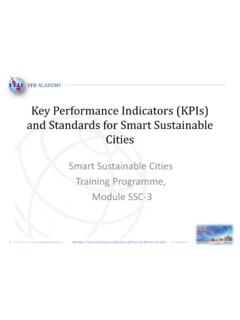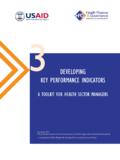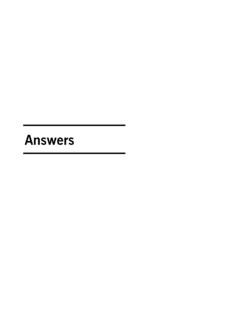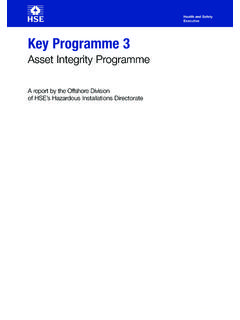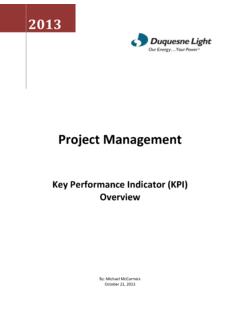Transcription of Pempal Key Performance Indicators for Internal Audit - IIA
1 1 July 2020 Copyright 2020 Pempal IACOPAll rights reserved. No part of this publication may be reproduced, transmitted, or distributed in any form without prior written permission from Pempal IACOP except for noncommercial uses permitted by copyright law. Any modification to the guidance provided on cooperation agreements in this publication requires a citation to the effect that this publication was used and that it was modified. Contact Audit Community of Practice (IACOP)T: +7 495 745 70 00 ext.
2 2002E: cknowledgements 2 Pempal and IACOP 3 Preface 4 Glossary 4 PART 1. BACKGROUND 5 PART 2. WHAT ARE KEY Performance Indicators ? 6 Internal Audit standards 6 KPIs for Internal Audit 6 Creating strong and effective KPIs 7 PART 3. A BALANCED SCORECARD FOR Internal Audit 10 PART 4. EXAMPLES OF THE USE OF KPIS BY Internal Audit 16 United Kingdom 16 Austria 20 European Commission 24 PART 5. FOUR KEY AREAS FOR CONSIDERATION IN THE USE OF KPIS 271. How should management be involved in developing KPIs? 272. Should personal Performance rewards be directly linked to KPIs?
3 283. How long is the transition process to develop good KPIs? 284. How will the COVID-19 pandemic impact the use of KPIs? 28 PART 6. THE CENTRAL HARMONIZATION COMPONENT OF THE Internal Audit FUNCTION 29 Helping Internal Audit units establish KPIs 29 CHUs should lead by example and establish KPIs for their support role 301. Table of Contents2 The Internal Audit Community of Practice (IACOP) would like to thank members and global experts for their contributions to its Smart Interactive Talk and to preparation of this paper, especially the following: Arman Vatyan, Pempal Program Leader, World Bank; Hannes Schuh, Chief Audit Executive, Austrian Federal Ministry of Finance; Jean-Pierre Garitte, World Bank consultant; Jessica Kestermont, Quality Assurance Team Leader, European Commission Internal Audit Service.
4 Nathan Paget, Chief Internal Auditor, UK Government Internal Audit Agency; Ljerka Crnkovi (Croatia), IACOP Executive Committee Chair; Mioara Diaconescu (Romania), IACOP Audit in Practice Working Group Leader and Executive Committee member; Richard Maggs, World Bank consultant. 2. A cknowledgements3 Public Expenditure Management Peer Assisted Learning ( Pempal ) is a network to facilitate exchange of professional experience and knowledge transfer among public financial management practitioners in countries across the Europe and Central Asia region.
5 The network, launched in 2006, aims to contribute to strengthening public financial management practices in the member countries through developing and disseminating information on good practices and their application. The network is organized around three thematic communities of practice: Budget Community of Practice, Treasury Community of Practice, and Internal Audit Community of Practice. The main overall objective of the IACOP is to support its member countries in establishing modern and effective Internal Audit systems that meet international standards and good practices; key for good governance and accountability in the public sector.
6 The key donors and development partners to the program are the Swiss State Secretariat for Economic Affairs, the Ministry of Finance of the Russian Federation, and the World Bank. The Dutch National Academy for Finance and Economy provides non-financial support. Knowledge products developed by the IACOP include Good Practice Internal Audit Manual Template ; Good Practice Continuing Professional Development Manual Template ; Internal Audit Body of Knowledge ; Risk Assessment in Audit Planning ; Cooperation Among Public Sector Audit and Financial Inspection Entities ; Quality Assessment and Improvement Guide ; Pempal Guidance on Internal Audit : Demonstrating and Measuring Added Value ; and Impact of COVID-19 on the Role and Activities of Internal Audit .
7 All are available from Pempal and IACOP4 COVID-19 CHUGIAAKPIIADIIAIASIACOPIPPFMOUPEMPAL Corona Virus Disease 2019 Central Harmonization Unit Government Internal Audit Agency of the United Kingdom Key Performance indicator Internal Audit Department of the Ministry of Finance of Austria The Institute of Internal Auditors Internal Audit Service of the European Commission Pempal Internal Audit Community of Practice International Standards for the Professional Practice of Internal Auditing on Quality Assurance and Improvement Memorandum of Understanding Public Expenditure Management Peer Assisted Learning network5.
8 GlossaryThis paper is based on materials and discussions at a Smart Interactive Talk among members of the IACOP and relevant global experts on June 2, 2020. The aim was to identify good practice for heads of Internal Audit units on the key Performance Indicators to measure Performance of the Internal Audit function and how they can best be used. Representatives from Austria, the United Kingdom, and the European Commission gave presentations and joined a question and answer session with IACOP members.
9 More information, including the agenda and presentation materials, are available on Pempal Preface1 What gets measured gets done! is a favorite saying in many management textbooks. There is much evidence to support this saying and good reasons to assume that it can be applied to the work of Internal auditors. Demonstrating and measuring the value of public sector Internal Audit was a priority area in the IACOP 2018 2019 Action Plan. Good practices were identified through an extensive collaborative process, involving practitioners and policymakers from Pempal member countries and other partners.
10 In October 2019, Pempal issued guidance for Internal Audit on demonstrating and measuring added value in the public Its focus is on how Internal Audit can demonstrate that it adds value in the different circumstances that exist in Pempal member countries; and how to measure this in terms of value for money (economy, efficiency, and effectiveness). This paper builds on that guidance by providing more detail on key Performance Indicators (KPIs) that can support Internal Audit in measuring its Performance .



